Garden visit: Autumn in Tanja’s down-to-earth garden on Ekeberg in Oslo
Earlier in the season, Tanja’s outdoor space was a vibrant green. Now it has shifted to a warm palette of beautiful autumn colors.

Briefly about the garden
Garden owner: Tanja Reine, @rekkehusbonden on Instagram, her husband Amund, children Emil, Jenny, and Tim, and their dog Kokos
Garden: Row house garden of about 130 square meters in a down-to-earth style, where most things are edible, featuring a greenhouse, raised beds, and a covered pergola
Hardiness zone: H3-H4 on Ekeberg in Oslo
“An edible garden like mine is very green in the summer. Now in the autumn, the leaves are changing appearance. Finally, it has become a real celebration of color here,” says Tanja.

The grape leaves have turned yellow-orange, the elderberries have produced black, decorative fruits, and the hops on the garden arch shine golden-brown in the autumn sun. Pumpkins glow like yellow-orange lanterns throughout the outdoor space. All of this is framed by tall birch and maple trees, creating a beautiful, dancing, warm backdrop. Now the sun sits lower in the sky, casting more shadows and adding drama to the garden. And in the pallet collars, it’s a full autumn feast with tempting flavor-packed delights.
Time to taste
The time has finally come to taste everything the family has sown.
“It’s time to reap the main reward—enjoying and eating everything we’ve managed to grow. Autumn is long, and fortunately, not everything ripens at once. That’s great because it makes it easier to enjoy it all.
“It’s especially fun for our youngest, Tim, to see that all the little seeds he helped plant earlier in the season have finally turned into something tasty,” says Tanja as she digs in the soil for potatoes.
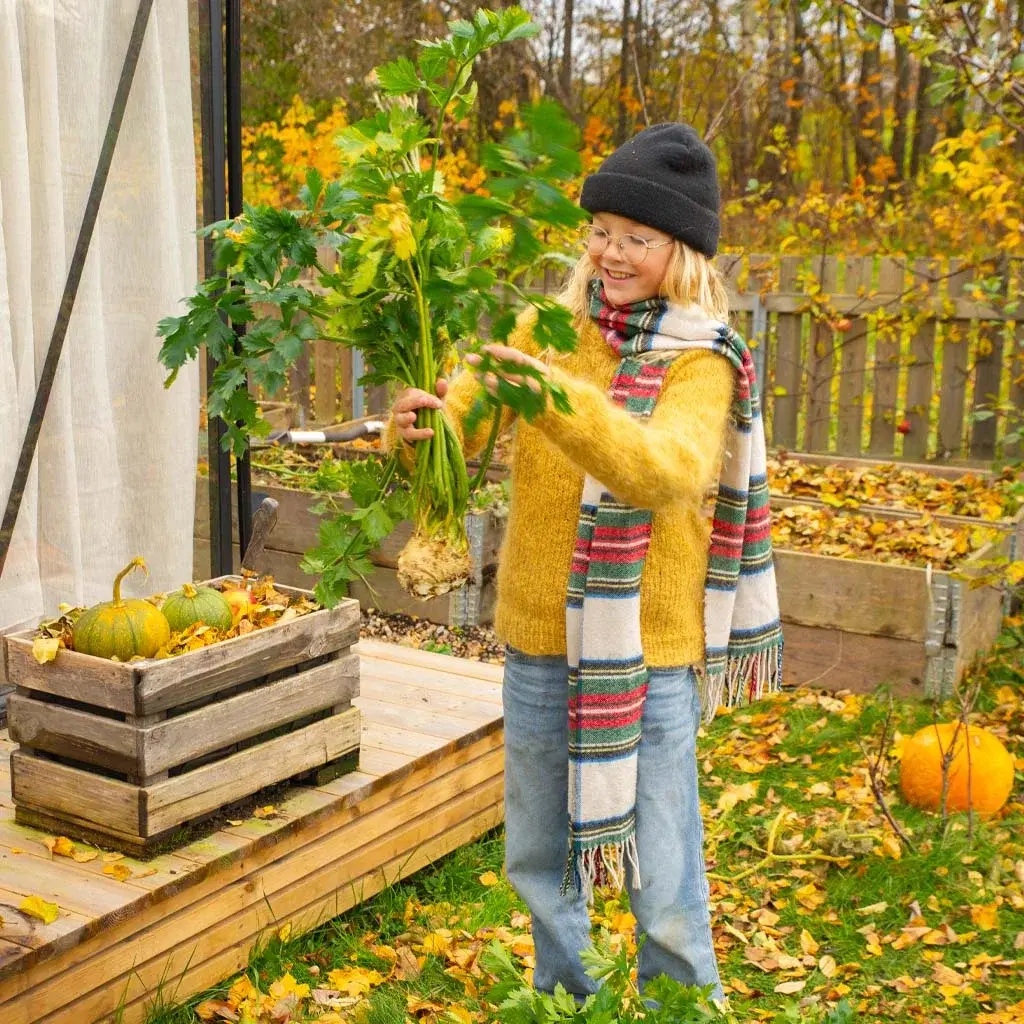
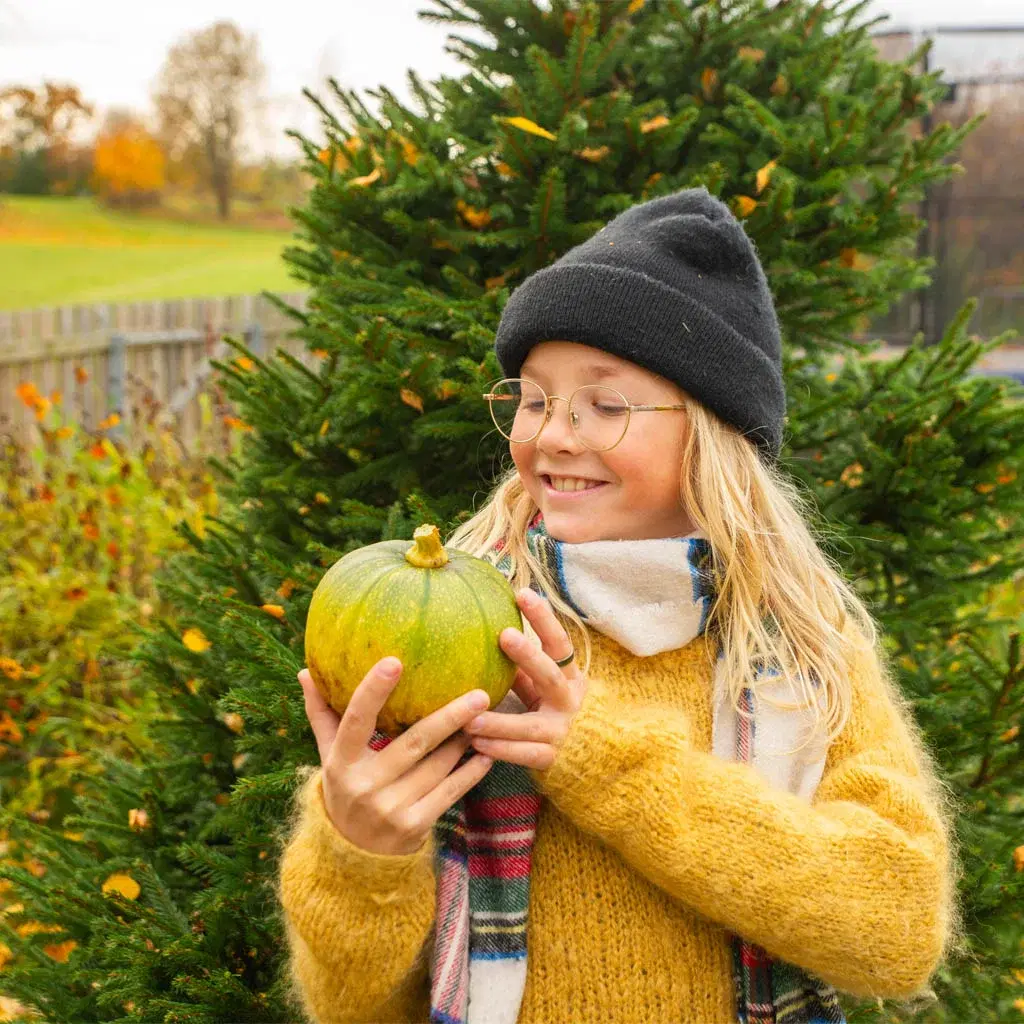
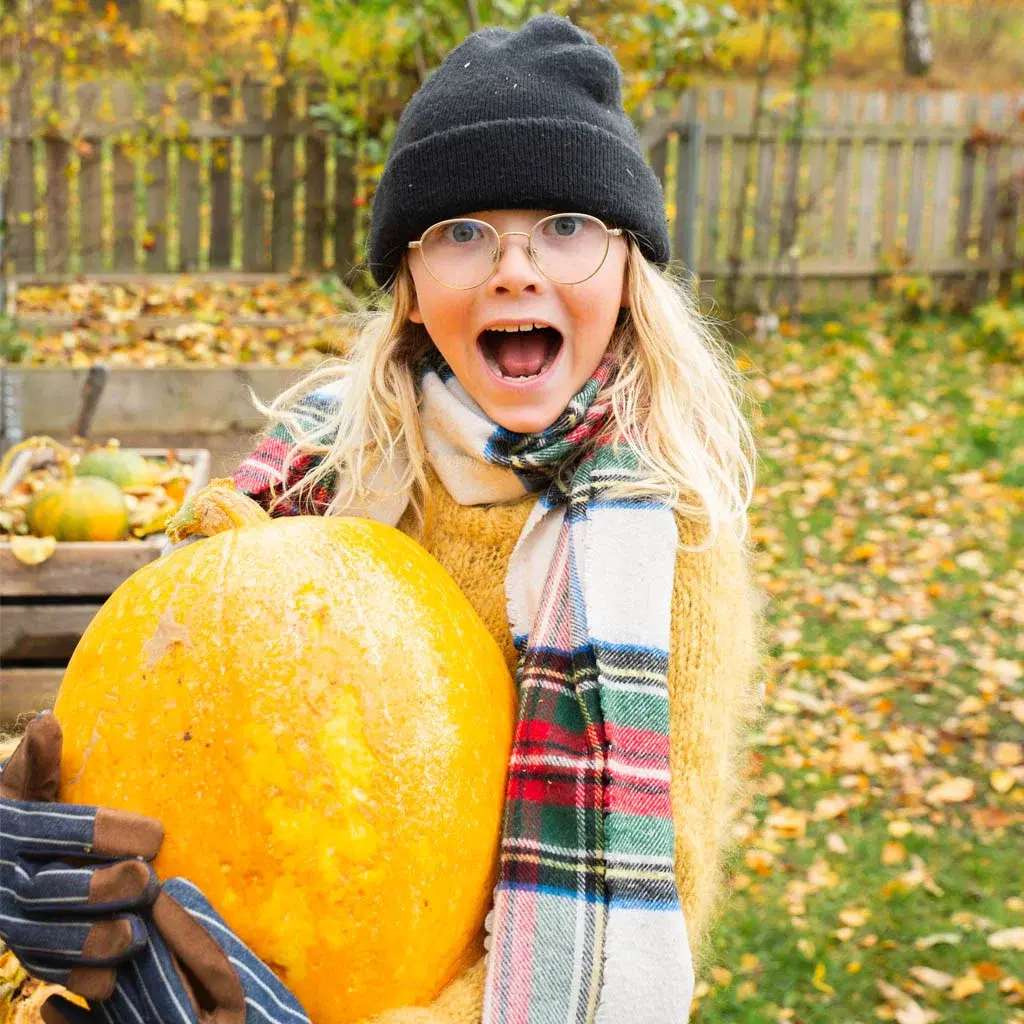
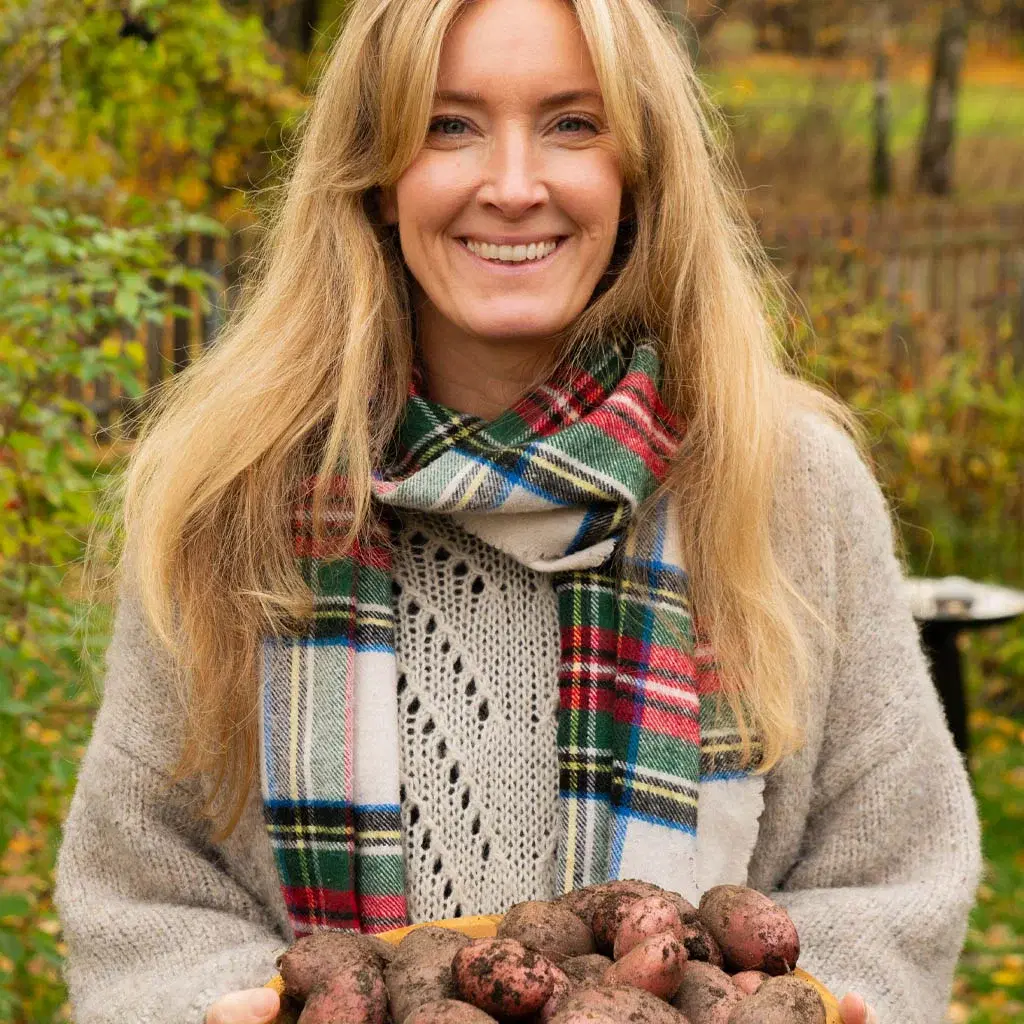
Their son Tim often helps pull up celeriac and harvest pumpkins, artichokes, corn, and potatoes.
The tomato and cucumber plants in the greenhouse are being cleared of fruit at the end of the season and placed in the sun on the kitchen counter to ripen. Celeriac, potatoes, and kale remain in the raised beds through to winter until needed in the kitchen.

Juicy fruit
The fruit trees are ripe now as well.
“Few things beat fresh, juicy, and crisp apples from our own trees! They can be used for all sorts of fun things like making purée, juice, cakes, and jam. Everything is delicious! We also love eating them straight from the tree,” says Tanja. She also has peaches and apricots in the greenhouse.
“They haven’t produced fruit for us yet, but the goal is for them to become lush plants we can harvest from. It’s nice to have a few exotic touches too!”

Tanja’s apple sauce recipe
- 1 kilogram of apples – peel and core the apples and place them in a pot with about 100 ml of water.
- Add about 100 ml of sugar (can also be made without sugar or with sweeteners like Stevia or Sukrin. Experiment to your taste).
- Simmer gently for 10–15 minutes until the apple pieces are soft (don’t cook too long, or it will turn into mush).
- Optionally, add a vanilla or cinnamon stick to the applesauce for extra flavor.
- Pour into sterilized jars while still piping hot and seal with a tight lid.
- Let cool on the counter before storing in a cool place.
Delicious on bread or on top of oatmeal!
Autumn coziness
“The crisp, Norwegian autumn air is absolutely amazing. Now we can start lighting candles in the evenings. This is my favorite season in the garden!” she says. The family also enjoys grilling sausages over the fire pit as the temperatures drop.

In the autumn, the greenhouse serves as an extra living room, as long as you bundle up a little. The dog Kokos enjoys it too.
“A highlight of autumn is giving the birds a little extra love. All the bird feeders we’ve placed around the garden bring a lot of life. It feels good to give the birds some extra care throughout the autumn and winter.”
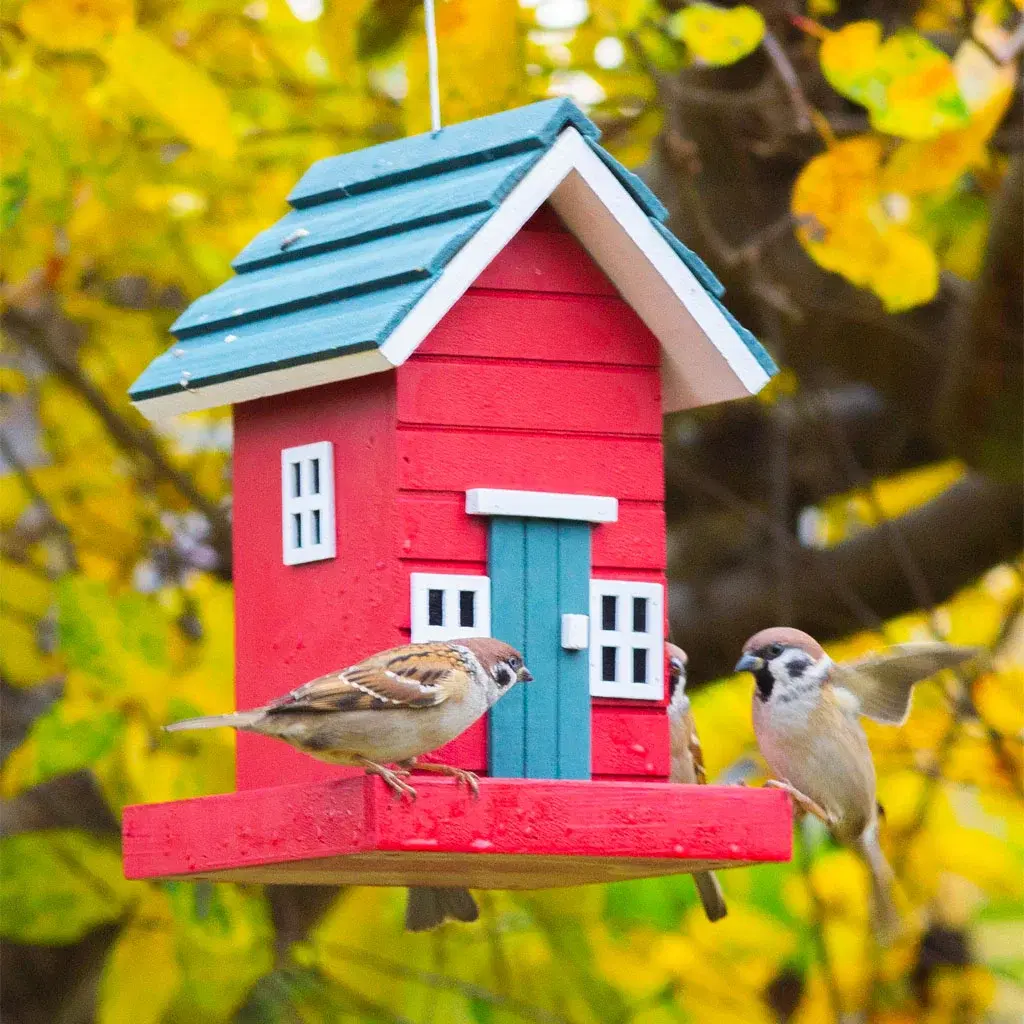
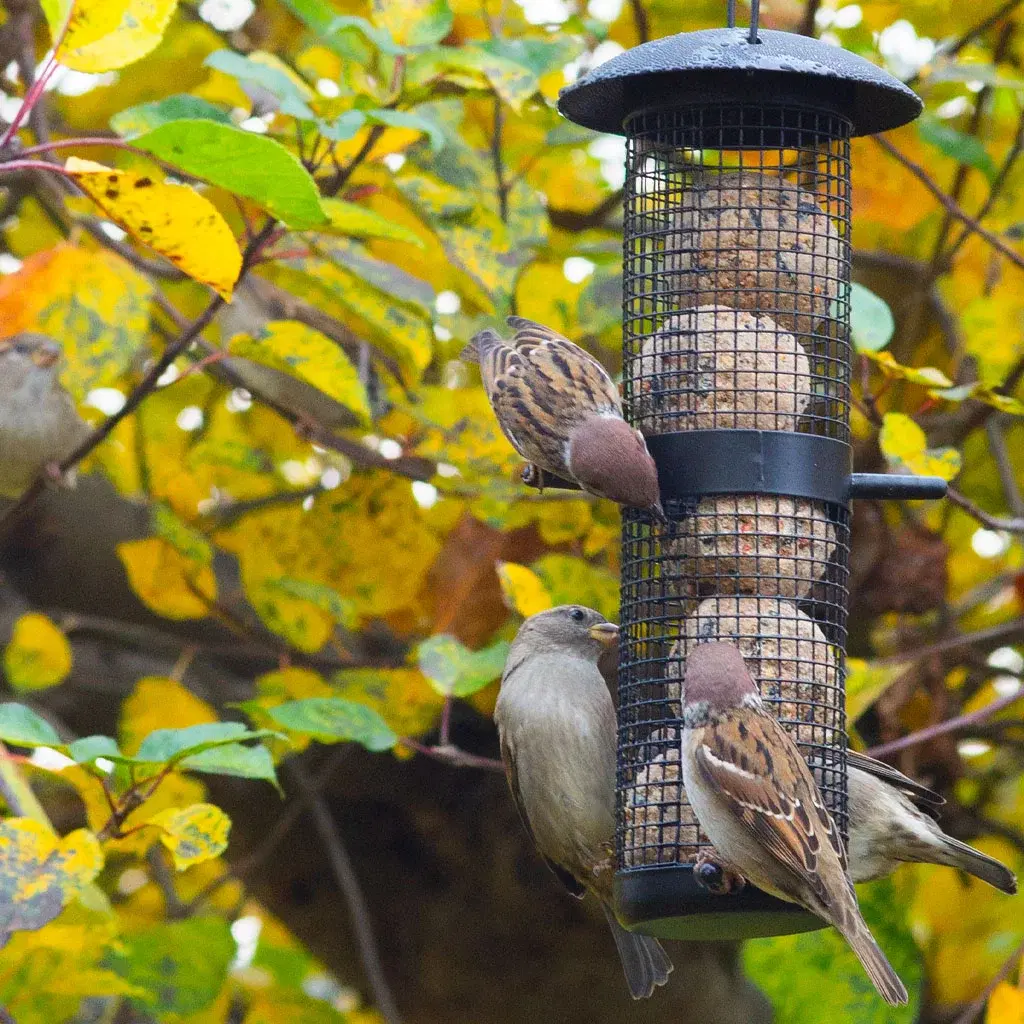
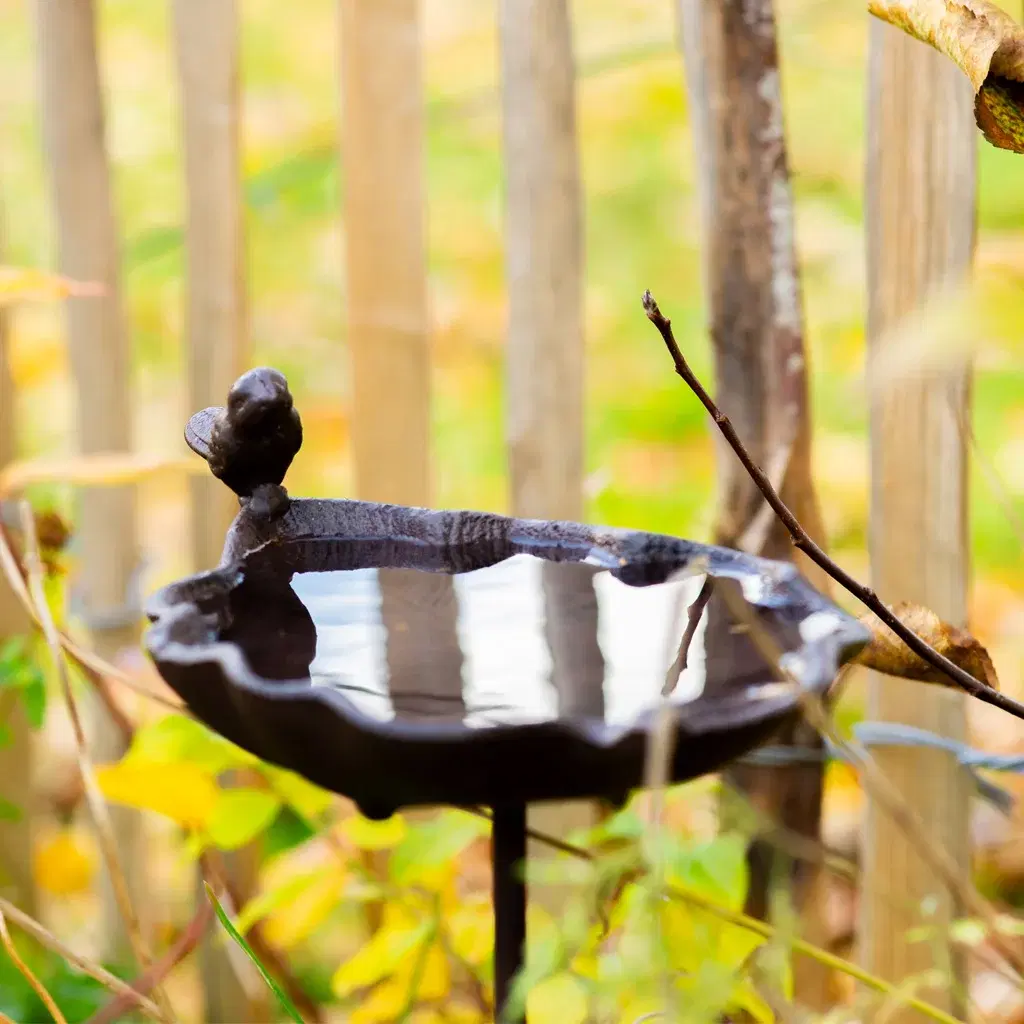
“I’m not concerned with having a perfectly groomed garden. I prefer it a little wild and informal—it gives it personality. So here, berries and seed heads are left on shrubs, perennials, and flowers throughout autumn and winter. They serve as food for small birds.
“I’ve also noticed that birds really enjoy having small water baths near the feeding stations where they can take a dip. It’s so cozy to watch them through the windows in winter,” she says. A layer of extra leaves is placed on top of the raised beds as a protective blanket before winter sets in.
Atmospheric greenhouse
No season is the same in Tanja’s garden. It is constantly changing. Tanja already knows what she wants to try next season.
“The garden looks very green when you only have edible plants. So my plan for next year is to add more colors by sowing edible flowers like nasturtium, cornflower, calendula, carnation, and lavender. I also want several types of sunflowers in different colors and heights to decorate and add vertical interest. I can also imagine letting small, round squash grow over a garden arch so they hang ready to pick and look decorative.
But first, it’s time to prepare the greenhouse for one of the year’s highlights—Advent. Tomato plants, cucumber plants, and heather are moved out, the floor is swept, and pots are emptied and cleaned. Then warm blankets, rugs, and lanterns move in. Eventually, the Advent star is hung up.
“The outdoor space can still be enjoyed even when it gets colder and darker earlier. Then it’s just a matter of lighting candles and placing a small stove in the greenhouse. I love making room for all the fun things that will happen there leading up to Christmas.”

Time flies. Before long, wreath-making, warm mulled wine, and gingerbread cookies are on the program in the greenhouse. Every season has its own charm!
Tanja’s best tips for preserving fruit and berries through autumn
- Berries are perfect for freezing in bags — then you can thaw them as needed. They’re delicious to use in smoothies, sorbets, ice cream, and cakes throughout the winter.
- Jam is a classic way to make your garden’s fruit and berries last through the colder months. Cooked jam can be stored for a long time in sterile, airtight jars.
- It can be tricky to use up all the apples since they often ripen at the same time. A smart way to extend their use is to slice them and freeze the pieces. That way, you can easily make apple cake and applesauce all winter long.
- Plant different varieties of apple or plum trees. Tanja has planted nine different types of apple trees, which means the fruit ripens at slightly different times, so not all the apples need to be harvested at once. The bonus is that each variety also has its own unique flavor.
- From apples, you can make sauce, juice, or compote that can be frozen and enjoyed throughout the winter.
- Fruit and berries can also be dried — simply use a low oven temperature. They’re delicious in breakfast cereal, as a healthy snack, or in baked goods.
- If you plan to make juice later in the season, you can freeze raspberries, blackcurrants, and redcurrants unwashed. It doesn’t matter if a few leaves end up in the pot — the juice will be strained anyway.

Follow the down-to-earth garden through the seasons:

- aka @rekkehusbonden, copywriter, content producer and gardening enthusiast who is passionate about the joy of growing, with a love for everything edible.

- aka @hagebonanza, garden-crazy writer and content producer who has visited over 100 of Norway's most beautiful outdoor spaces to spread gardening joy and inspiration.
More from our world of gardens:
You are here:














